The Evolution of Greta Thunberg
How did Greta Thunberg go from quiet teenager to internationally famous climate activist?
Published March 24 2021, 4:42 p.m. ET
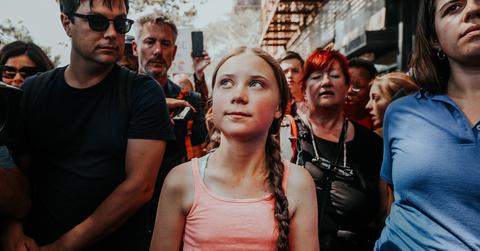
On Aug. 19, 2018, Greta Thunberg was an anonymous 15-year-old girl living in Sweden. But on Aug. 20, 2018 she made a move that — little did she know — would launch a worldwide movement and catapult herself to worldwide fame. And now, just a few years, two very long boat trips across the Atlantic ocean, and one pandemic later, the 18-year-old climate activist is TIME's 2019 Person of the Year, the voice of the climate movement, and an unstoppable force unlike anyone else.
So how exactly did Thunberg go from being a quiet teenager whose Instagram was dedicated to photos with her dog, to internationally famous climate activist with 10.6 million Instagram followers? The evolution of Greta Thunberg — at least, from the public’s perspective — has been quick and steady, thanks to her unrelenting determination to keep fossil fuels in the ground, the way she has taken that fight to the streets, and the media’s coverage of her school strikes.
But to understand how Thunberg went from riding the school bus to chartering a yacht across an ocean to international celebrity, we compiled a timeline of Thunberg's past few years.
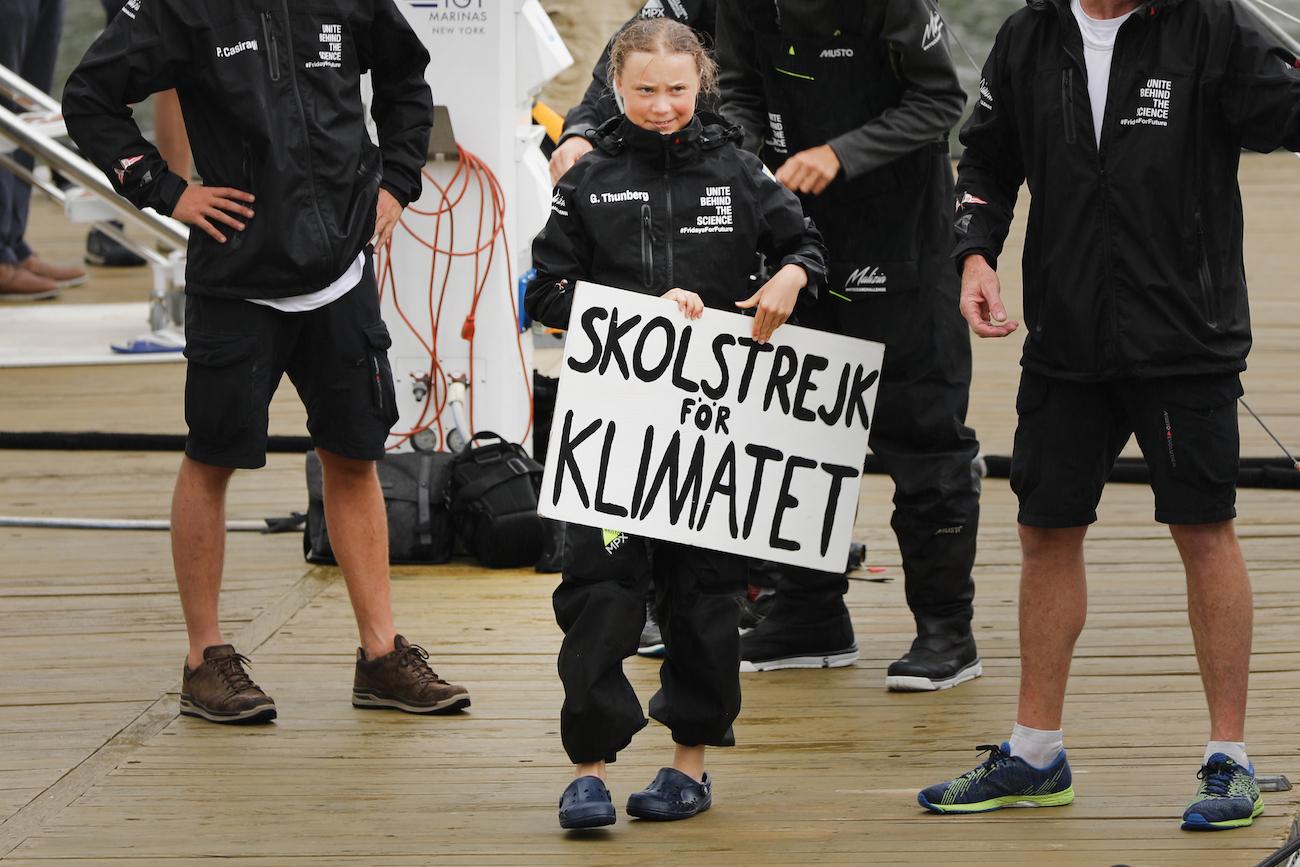
Greta Thunberg learned about climate change as a young child — and took action at home.
Thunberg first learned about the climate crisis when she was 8 years old. She read everything about the mounting climate emergency that she could find, and by the time she was 11, her worries about the Earth came to a head. Thunberg became depressed, stopped talking, and developed an eating disorder — she stopped eating and lost 22 pounds. She was later diagnosed with selective mutism, OCD, and Asperger's — which has helped her see things in “black and white,” as she says, and mobilize her to dedicate herself to combating the climate crisis.
But before making that dedication so public, Thunberg made some eco-friendly changes at home. For one thing, she became vegan after learning that farming meat, dairy, and eggs is a highly unsustainable and polluting process. Thunberg also vowed to stop buying new things and stop flying in airplanes, another significant source of greenhouse gas emissions.
And it took a little time, but Greta Thunberg’s parents eventually followed in her footsteps — her father Svante Thunberg also went vegan, and her mother Malena Ernman is “90 percent vegan,” Greta has said. Her parents also joined her protest of the aviation industry, known as flight shame, which resulted in her mother pretty much giving up her career as a famous international opera singer, The Guardian reported. (Luckily, Ernman has found other sources of income, including writing a memoir called Scener ur hjärtat, which translates to Scenes From the Heart.)

When Greta Thunberg began protesting, her whole life changed.
During her early teen years, Thunberg got involved with local protests and climate organizations. But her mindset shifted last year after an attacker shot and killed 17 people at Marjory Stoneman Douglas High School in Parkland, Fla. in February 2018. In the shooting's aftermath, MSD students quickly organized the March for Our Lives, and their powerful movement eventually became known as Never Again MSD.
Halfway across the world, Thunberg saw what these students were doing — and she was inspired. A few months later, Greta staged her first school strike.
Greta Thunberg's first school strike:
On Aug. 20, 2018, the then-15-year-old sat outside of Sweden’s parliament building, bearing a wooden sign reading “skolstrejk för klimatet” (which translates to “school strike for climate”), and a handful of homemade flyers with some facts about the climate crisis. Thunberg's intention was to get the attention of politicians who worked in the building. She posted about her first strike on social media, and she made a few headlines that day.
“The first day, I sat alone from about 8:30 a.m. to 3 p.m. – the regular school day,” Thunberg told The Guardian in March 2019, recalling her first strike. “And then on the second day, people started joining me. After that, there were people there all the time.”
Strikers soon joined Thunberg, eventually forming the Fridays for Future movement.
Thunberg (and her growing group of followers) continued to strike outside the parliament everyday until Sweden’s September 9, 2018 election, garnering more and more media attention. Thunberg returned to school four days a week afterwards, continuing to strike every Friday. People worldwide soon started to join her, cutting school to strike outside their local parliaments or city halls. The strikes grew more and more every week, and officially became known as the Fridays for Future movement.
Fridays for Future has continued to blossom since then, and Thunberg’s voice has only gotten louder. In November 2018, Thunberg gave a TEDx Talk in Stockholm (which was later upgraded to an official TED Talk), where she opened up about her journey to climate activism, and she explained what politicians need to do to get out of this mess — namely, establish laws to stop burning fossil fuels.
"The climate crisis has already been solved. We already have all the facts and solutions," Thunberg told the crowd during her TEDx Talk. "All we have to do is to wake up and change."
And Thunberg is certainly helping people wake up and change. She’s inspired millions of students from every continent on Earth (including Antarctica) to strike from school and show political leaders that they want this issue to be taken seriously.
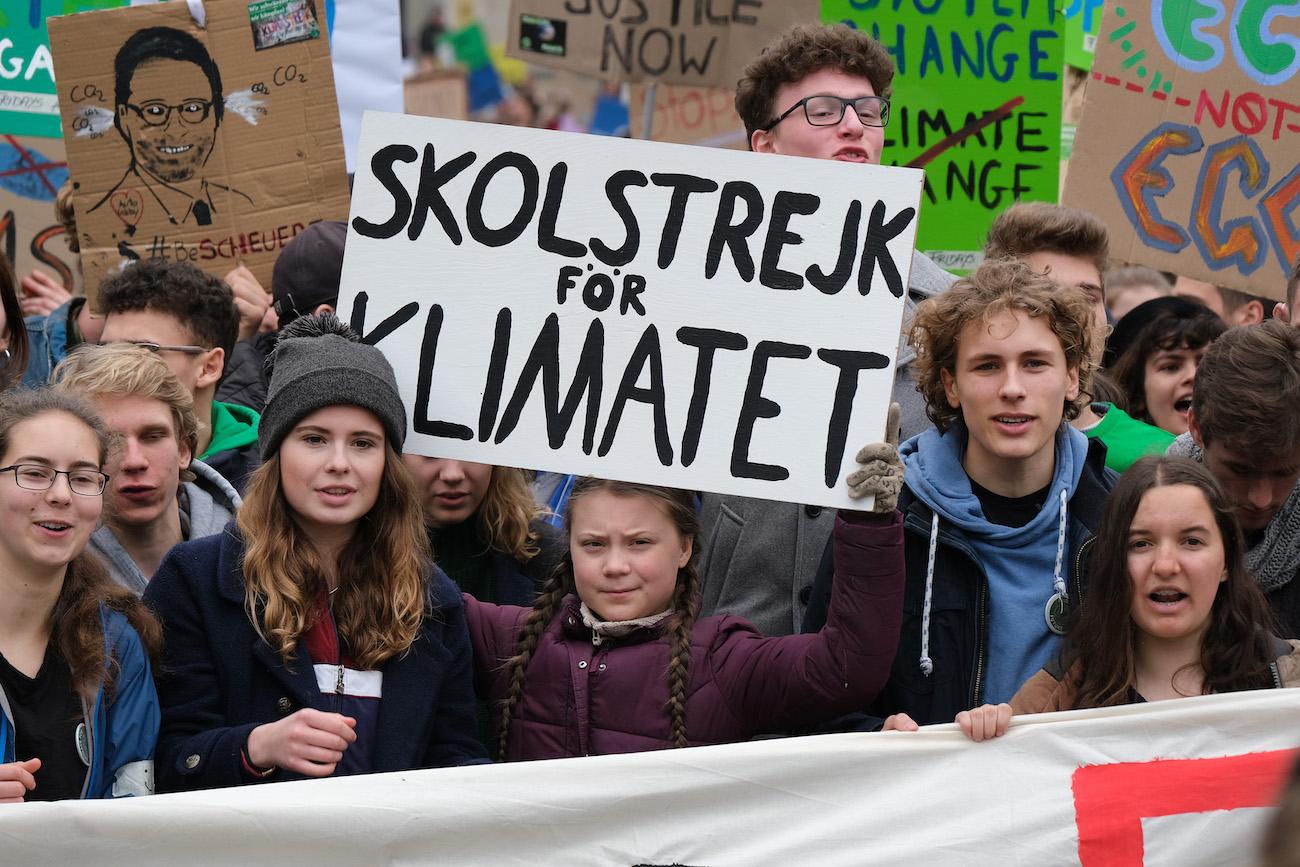
Thunberg has made numerous high-profile speeches.
Besides her TEDx Talk, Thunberg has made plenty of other high-profile speeches. For instance, she has spoken at the U.N.'s climate summits, at the British Parliament in London, and the World Economic Forum, to name a few.
Thunberg does not shy away from calling out her audience when she makes speeches. “You lied to us. You gave us false hope,” she said in her speech to British MPs. While some activists may prefer to sugarcoat the truth, Thunberg instead looks in the eyes of politicians and industry executives, delivers blunt one-liner after blunt one-liner, and never holds any criticism back.
And just when one might think her momentum is slowing down, it picks back up. In May 2019, Thunberg became an author when quotes from her speeches were turned into a book called No One Is Too Small to Make a Difference. Also this year, celebrities such as Meghan Markle, Duchess of Sussex and Leonardo DiCaprio sung her praises on social media; she was nominated for a Nobel Peace Prize; and TIME named her one of the 10 Next Generation Leaders, one of the 100 Most Influential People of the year, and the Person of the Year.
Her Most Influential People profile was written by none other than Emma González, a survivor of the Parkland school shooting and a March for Our Lives co-founder, who inspired Thunberg to start her climate strikes.
Greta Thunberg's long journey:
One of the most significant things to happen to Thunberg was when the U.N. asked Thunberg to speak at its Climate Action Summit on Sept. 23, 2019 in New York City. But there was just one problem: the 16-year-old had vowed to no longer fly on airplanes. And after convincing her mom to stop flying and subsequently give up her lucrative opera career, Thunberg couldn’t exactly go back on her own promise.
So for several weeks, she publicly pondered different methods of traveling from Europe to the U.S. — and she finally found a zero-emission option in the Malizia II yacht. The boat was skippered by Pierre Casiraghi (grandson of Rainier III, Prince of Monaco, and Grace Kelly, Princess of Monaco) and professional sailor Boris Herrmann. Thunberg’s father Svante and filmmaker Nathan Grossman also came along for the ride, and the group spent two weeks traversing the Atlantic’s rough waters, eating freeze-dried meals, and going to the bathroom in a bucket.
What sounds like a rather unpleasant situation to most was a haven for Thunberg. In fact, during the press conference she held after the boat docked in New York, she told the crowd that she would miss many of the things the boat gave her: disconnection from the world, a lack of responsibilities, peace and quiet, and immersion in nature.
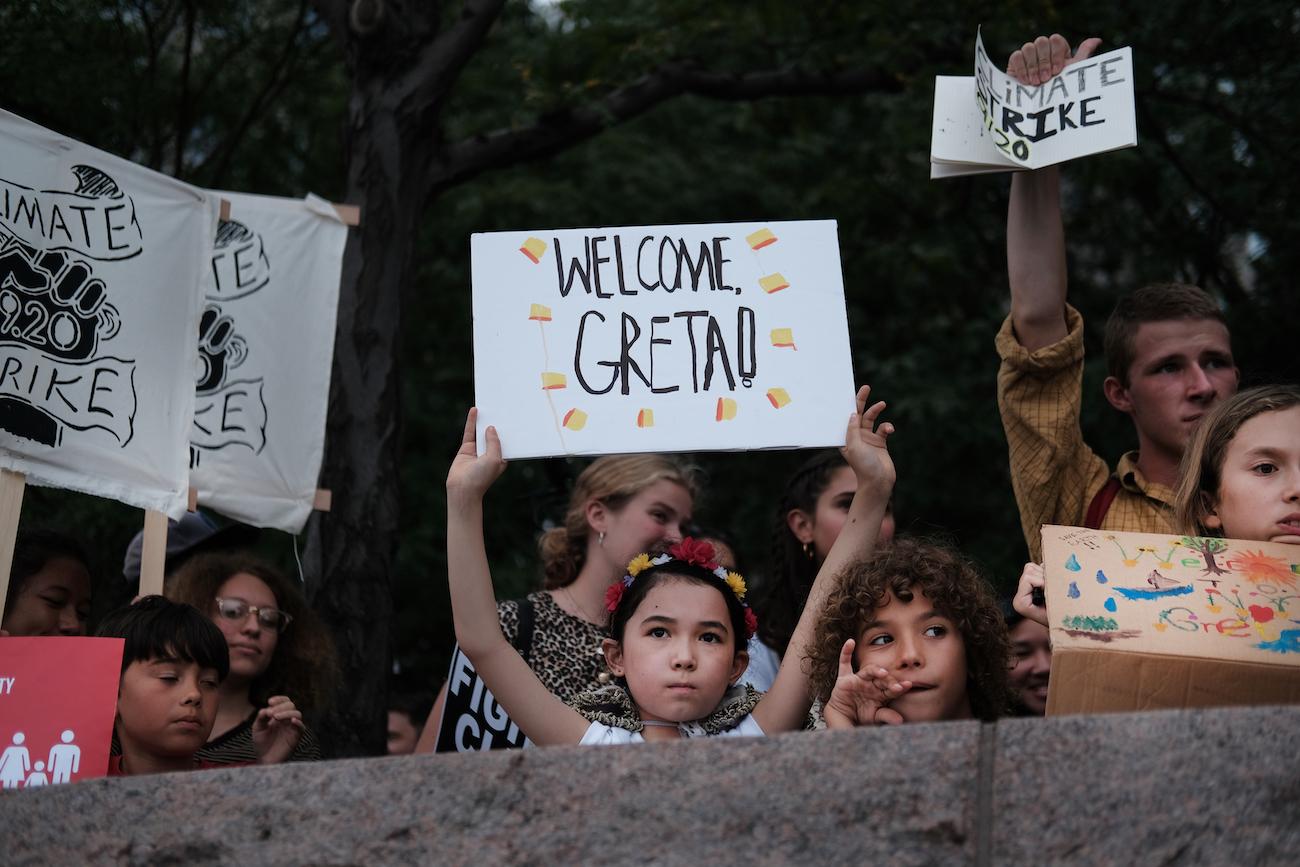
Children and adults wait for the arrival of teenage climate activist Greta Thunberg into New York City after crossing the Atlantic in a sailboat on on August 28, 2019 in New York City.
Despite the excitement surrounding her boat journey, there have been some critics. As The New York Times reported, a few haters rolled their eyes at the single-use plastic water bottles that were spotted on the boat; others simply chided the teen for leaving school. Additionally, the Malizia II certainly couldn’t stay docked in the Hudson River until Thunberg was ready to return to Europe. So, to help get the boat back across the Atlantic, a few crew members flew to New York to staff the journey back. That also drew some disapproval, since those flights produced more emissions than had Thunberg just taken a one-way flight by herself in the first place.
However, there are a few ways to look at that criticism. For one thing, yeah, there may have been less emissions overall (and less plastic water bottles used) had Thunberg simply taken the one flight. But Thunberg’s boat ride wasn’t about being perfect, and it wasn’t even just about the emissions — it was symbolic.
It was about taking a public stand against polluting industries (big oil and gas, as well as the aviation industry) by personally not participating in them. It was about honoring her commitment to abstain from flying for the planet. It was about making a statement — a statement that when there’s a will, there’s a way, and that we can do more to curb the climate crisis than we think.
Thunberg’s voyage sent the message that when most people say they “can’t” do something for the planet — whether that’s going vegan, going zero waste, quitting fast fashion, or quitting flying — what they really mean is that they don’t want to. But Thunberg wants to do everything she can for the planet, no matter how many months she has to be away from home, and no matter how times she has to pee in a bucket on choppy ocean water.
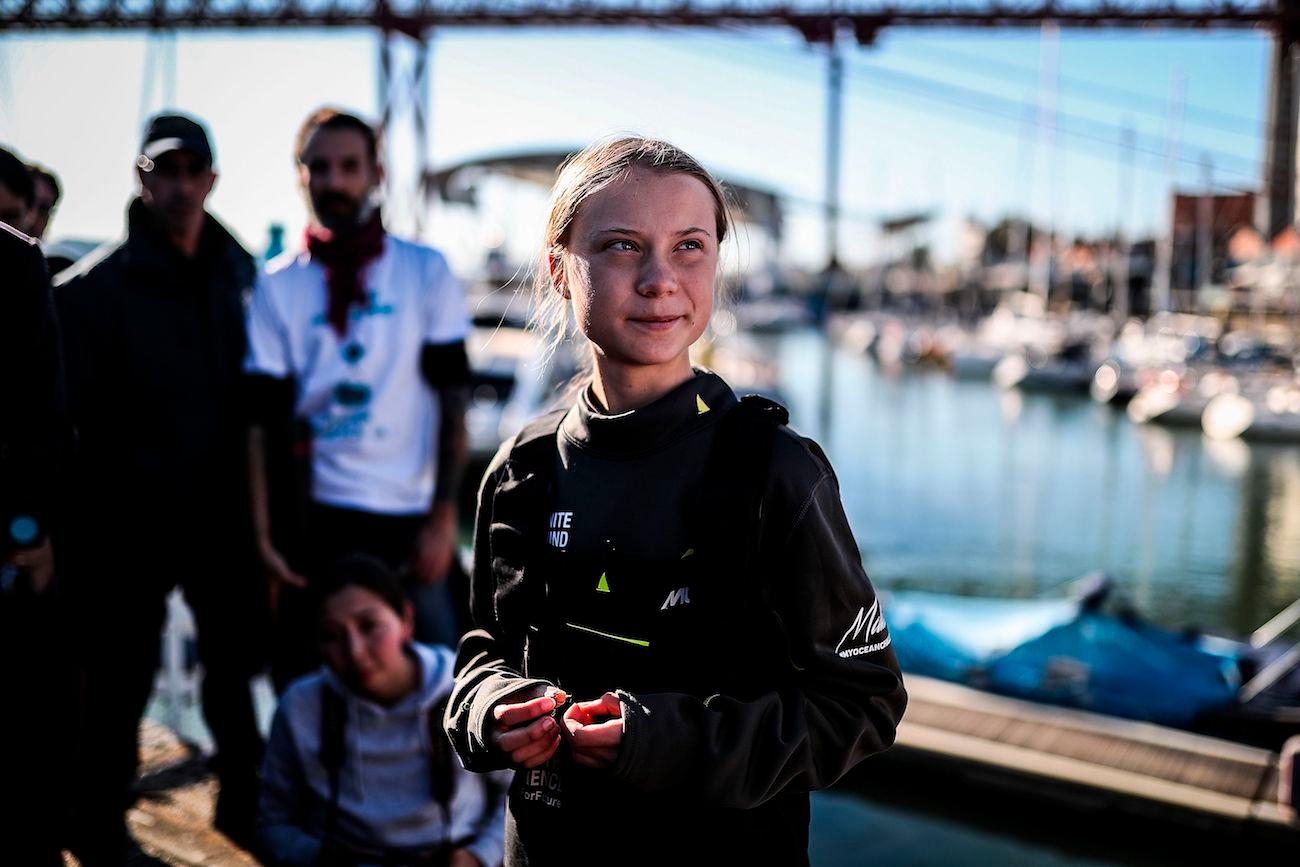
Swedish climate activist Greta Thunberg is pictured after disembarking from the catamaran La Vagabonde at the Santo Amaro docks in Lisbon, on Dec. 3, 2019.
And her next boat journey wound up coming a lot sooner than she had planned. After the U.N. conference, Thunberg had intended to stay in the Americas for at least nine months. She gradually made her way to the west coast of North America (via a Tesla gifted to Thunberg by Arnold Schwarzenegger), with a goal of making it to Chile by December for COP25. However, when it was announced that the conference was moving from Chile to Madrid — back across the ocean Thunberg had just crossed a few months prior — Thunberg had to think fast.
Instead of hopping on a flight back to Europe, Thunberg quickly organized another boat ride across the Atlantic. This one, which got her from Virginia to Lisbon, took three weeks. “I’m not traveling like this because I want everyone to do so,” Thunberg told reporters after she docked in Lisbon, according to TIME. “I’m doing this to send a message that it is impossible to live sustainably today, and that needs to change.”
By ignoring what critics had to say about her first boat ride and maintaining her commitment to boycotting air travel, Thunberg proved that criticism does not bring her down — instead, it fuels her.
The pandemic hasn't stopped Thunberg's activism.
When the coronavirus pandemic hit in early 2020, Thunberg's activism did not falter. She quickly moved the Fridays for Future weekly strikes online, encouraging others to share photos to social media with their signs each Friday. She digitally participated in livestreams around the world; she virtually sat down with the Dalai Lama; she met with German Chancellor Angela Merkel; a documentary about her activism called I Am Greta was released on Hulu; and she was the subject of a study about the "Greta Thunberg effect."
Thunberg certainly never expected to become a figurehead of the fight for the climate, but she has embraced her role expertly, thanks to her passion for the cause and the media’s embrace. She has what every activist hopes to gain: open ears of people in power. And though they may not all be on her side, they are listening.